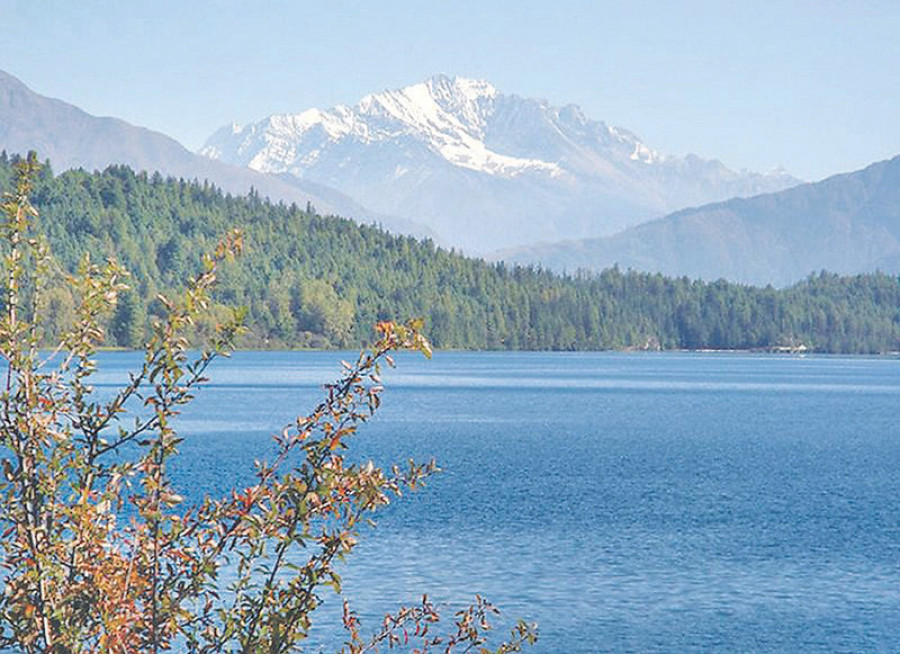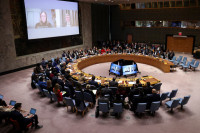Opinion
Scenery is not enough
Here are a few things Karnali Province needs to do to boost the local tourism sector.
Jaya Jung Mahat
It has been more than a year since Prime Minister KP Sharma Oli addressed the nation from Rara Lake in Mugu and laid the foundation for Karnali Rara Tourism Year 2075. Maybe this is the right time to assess the accomplishments made so far and outline a few steps that will help the provincial government to further improve the region’s tourism industry this year and in the future.
The provincial government invested Rs7.81 million during the tourism year to improve the conditions of the local destinations and attract local and foreign tourists. On April 21, the Ministry of Industry, Tourism, Forest and Environment of Karnali unveiled the accomplishments of the recently concluded Provincial Tourism Year. Domestic and international tourist arrivals to the region increased 11 and 34.2 percent respectively during the period. A total of 454,864 local and 21,291 foreign guests visited different destinations in the province respectively with Humla receiving the highest number of foreign visitors (mostly Indian pilgrims).
Despite possessing major potential, tourism activities have been poor in the region. While Nepal’s major trekking routes witnessed a growth between 2016 and 2017, the number of trekkers in Upper and Lower Dolpa fell 20 and 10 percent respectively. Mugu and Lower Dolpa received the lowest number of trekkers compared to other parts of the country. Rara and Shey Phoksundo National Parks saw only 201 and 535 foreign visitors in fiscal 2016-17. Karnali Province has only five tourism related industries registered; and in 2017, tourism royalties totalled a mere Rs1.6 million.
In light of these past records, the recent influx of tourists into the province is a good indicator, especially when the region is struggling to support local economic prosperity.
But it is doubtful if this part of Nepal is still capable of fully capitalising on local tourism potentials.
Things to do
The following are a few areas which the federal and provincial governments, private sector stakeholders and locals can act on to enhance the region’s often undervalued tourism industry. Being a Jumla native, I am busy on my cell phone and social media platforms during the tourist season helping friends and colleagues with information about lodging, food and related logistics. To help travellers explore places on their own, the local government, Nepal Tourism Board, Nepal Tourism Association and Nepal Association of Tour and Travel Agents should collaborate to create online and offline profiles of major tourist destinations in the region. Also, profiling should incorporate major transportation companies, hotels and tourism companies with indicative prices.
Besides natural resources, the province is rich in culture and historical sites, but many of them are poorly maintained and face existential threats. For example, the 18th-century Dullu Durbar in Dailekh and Sinjha Valley, a powerful medieval kingdom, do not get adequate attention from tourism stakeholders. Also, the region’s traditional Hudke dance is on the verge of disappearance. In order to diversify the local tourism industry and preserve and better promote local traditional practices and historical properties, the provincial government needs to adopt necessary conservation and promotion strategies.
Compared to other provinces, Karnali has been doing well in terms of prioritising home stay facilities for tourism by developing policy guidelines and investing considerable resources on research on home stay tourism. The only thing that is missing from the government’s priority list is selecting local indigenous communities as prime locations for home stay facilities. This will ensure social and economic prosperity of marginalised communities while also providing local governments an opportunity to offer domestic and foreign visitors a new taste of Karnali.
Though there exist a considerable number of tourist destinations in the province, tourism currently seems to be focused on Rara Lake in Mugu and Shey Phoksundo Lake in Dolpa. If tourism is to be developed across the province, the sector should look beyond these two destinations. Humla may receive the largest number of foreign guests, but these Indian pilgrims use Simikot only as a transit point to visit Mt Kailash, and they spend very little time in the district capital.
In order to attract more travellers to the region and increase their length of stay, it is necessary to promote other destinations in the province and establish tourism trails by interconnecting major natural, historical, religious and cultural properties. To achieve this, a good starting point could be maintaining, promoting and linking the 21 new tourism destinations identified by the Nepal government.
Tracking system
A good system to track the inflow of tourists and their activities should be in place. This will not only help the local government to keep an accurate record of tourist arrivals to local destinations and the amount of revenue earned, but also provide information to stakeholders about the type of activities tourists are involved in so they can develop and promote destinations and activities accordingly.
Finally, keeping aside the financial irregularities involved during the inauguration and observance of Rara Karnali Tourism Year, the campaign has been able to give a much needed boost to the still struggling local tourism industry. Still, the accomplishments made during the tourism year are not sufficient, and all stakeholders need to collaborate to serve guests in every possible way to encourage them to visit Karnali again and bring more of their friends and families.
Mahat is a policy economist. He tweets at @jjmahat830.




 16.35°C Kathmandu
16.35°C Kathmandu












